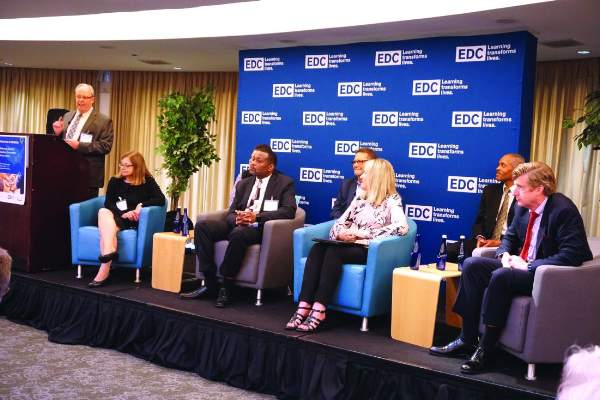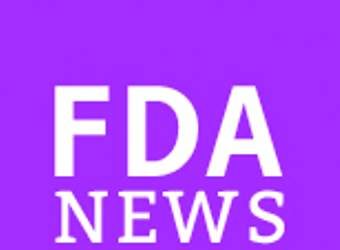AT AN EXPERT PANEL ON SUICIDE AND OPIOID DEATHS
WASHINGTON (FRONTLINE MEDICAL NEWS) Community pressures drive the twin tragedies of suicide and opioid deaths, which destroy community structure and must be addressed by community efforts, experts said during a panel discussion.
These so-called “deaths of despair” are inextricably linked, according to thought leaders in clinical medicine, volunteerism, and advocacy who gathered to share data and brainstorm solutions. A clear picture emerged of a professional community struggling to create a unified plan of attack and a unified voice to bring that plan to fruition.
The event was sponsored by the Education Development Center, a nonprofit that implements and evaluates programs to improve education, health, and economic opportunity worldwide, and the National Action Alliance for Suicide Prevention .
“We convened key leaders, including health care systems, federal agencies, national nonprofits, and faith-based organizations to strengthen our community response to suicide and opioids misuse and restore hope across the United States,” said Jerry Reed, PhD , EDC senior vice president. “To identify positive and lasting solutions requires collaboration from all sectors to achieve not only a nation free of suicide, but [also] a nation where all individuals are resilient, hopeful, and leading healthier lives.”
While several of the leading causes of death in the United States – including heart disease, stroke, and cancer – are declining, suicides and opioid deaths are surging, Alex Crosby, MD, told the gathering. An epidemiologist at the Centers for Disease Control and Prevention, Dr. Crosby cited the most recent national data, gathered in 2015. The numbers present a picture of two terrible problems striking virtually identical communities.
“Suicide rates increased 25% from 2000 to 2015,” said Dr. Crosby, who is also the senior adviser in the division of violence prevention at the National Center for Injury Prevention and Control. “In 2000, there were 30,000 suicides, and in 2015, there were 44,000. We are now looking at a suicide every 12 minutes in this country.”
Suicides cluster in several demographics, he said, “This is something that disproportionately affects males, working adults aged 25-64, non-Hispanic whites and non-Hispanic Native Americans, Alaskan natives, and rural areas.”
Deaths from drug overdoses, 60% of which now involve opioids, are on a parallel increase. “These have quadrupled since 1999, and the at-risk groups significantly overlap, with males, adults aged 24-52, non-Hispanic whites and Native Americans, Alaska natives, and rural communities most impacted. These are the very same groups seeing that increase in suicides.”
Joint tragedies, overlapping causes
The center is taking a public health stance on researching and managing both issues, Dr. Crosby said. “As we start looking at risk factors, we see that chronic health conditions, mental health, and pain management are factors common to both groups. But in addition to individual risks, there are societal risks … things in the family, community, and general society also influence these deaths.”
Former U.S. Rep. Patrick J. Kennedy agreed. Now a mental health policy advocate, Mr. Kennedy is not surprised that overlapping communities suffer these joint problems.
“On a societal level, these issues are directly related to the hollowing out of the manufacturing class, anxiety in a new generation that sees no financial stability,” he said. “Clearly, these are some of the reasons that these deaths track parts of the country that have been hardest hit economically. On top of that, we are lacking the kind of community connectedness we once had.”
Mr. Kennedy also faulted the marginalization of people with mental illnesses and the dearth of early screening that could identify mental disorders before they balloon into related substance abuse disorders. “Those are folks who, if screened and found to have a vulnerability from a mental illness, could be properly treated. These are illnesses that pathologize by neglect.”
The lack of awareness isn’t just a broad societal concept, but a specific weakness in the medical community, said Elinore F. McCance-Katz, MD, assistant secretary for mental health and substance use at the Substance Abuse and Mental Health Services Administration.
“There’s not a lot of attention paid to this issue unless you’re in a profession like psychiatry, where we are taught to systematically assess for suicidality,” Dr. McCance-Katz noted. “But unless you’re trained to address it, it’s not something you think about; and if you don’t think about it, you won’t uncover it.
“In primary care, for example, we see many with a pain complaint,” she continued. “That pain will be treated medically, but the psychological component, which might be devastating, won’t be. This can cause depression and suicidal thinking, and if patients are not asked about it, they will not offer it. So, we have the terrible situation where someone can leave the office with the means to harm themselves, but not the help they need to save their life.”
How to reach the vulnerable
When a medical disorder and its attendant comorbidities present a multifactorial etiology, the clinician must address the problem as a unit. This isn’t happening with suicide and drug overdose deaths, said Arthur C. Evans Jr, PhD, chief executive officer of the American Psychological Association.
“These conditions are tied to societal determinants, but our approach to them is still focused at the individual level,” said Dr. Evans. “As long as our primary way is to build treatment programs and expect people to find their way into them on their own, it’s not going to work. We know that 90% of patients with substance abuse problems don’t come to treatment. So, our strategy is missing a whole lot of people.”
A better way, he said, is to proactively provide holistic person-centered care. He has some very specific ideas, honed by his 12 years as commissioner of Philadelphia’s Department of Behavioral Health and Intellectual Disability Service , a $1.2 billion health care agency that is the safety net for 1.5 million Philadelphians with behavioral health and intellectual disabilities. Dr. Evans is credited with transforming the agency into a community-integrated, recovery-oriented treatment model .
He would like to see a similar national transformation in how at-risk groups are targeted, educated, screened, and treated. “We can create a culture where these issues are better understood by the public, so they can recognize problems early and connect to better health care.”
“Hope is at the center of our work,” Dr. Evans said. “The whole recovery movement has been about helping people have the hope that they can get better, that their lives can improve. Fundamentally, this must be the basis for treatment. We have focused for too long on the symptoms people bring to us, and missed the fact that these problems of suicide and drug abuse arise because people are hurting, both physically and psychologically. To recover, they need to believe there is a future in which they can feel better.”
If there’s a way, is there a will?
But while thought leaders continue to fine-tune their message, people continue to die, Mr. Kennedy said.
“We have all the experts who know what to do; the thing that is missing is the political will to do it,” he noted. “It’s driven by the stigma, the silence of families suffering from these illnesses. If we can’t talk about it in our families, we can’t talk about it to our legislators, and if they don’t hear from us, they do nothing. We need a political answer, ultimately. We appropriated a billion dollars over 2 years for the opioid crisis, but within 3 days of Hurricane Harvey, we appropriated $15 billion. It may seem we are making progress because we have great forums, but it’s a lot of talk, and people are dying every day.”
He likened the suicide and opioid death crisis to a natural disaster that requires not just money, but a highly coordinated response that targets multiple impacted areas.
“We need a Federal Emergency Management Agency–like response to this,” Mr. Kennedy said. “FEMA is designed to address all the missing pieces necessary for someone to recover from a disaster. In recovery, we have a physical problem, a mental obsession, and a spiritual malady. People need medical help – access to medication to get their lives stabilized. They need the psychological component of cognitive behavioral therapy. And they need the spiritual angle, which is social support, people reaching out to each other.
“Right now, everyone thinks this is a problem to be dealt with ‘over there,’ but it isn’t,” he added. “It involves all of us, and if we want to put these communities back together, we need everyone energized and contributing.”





